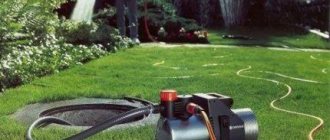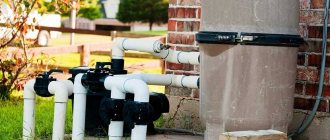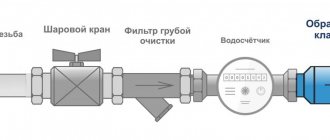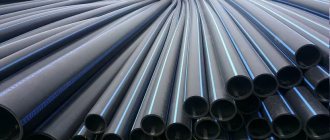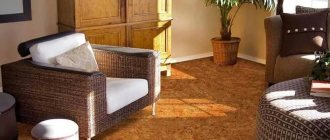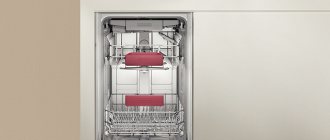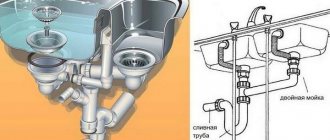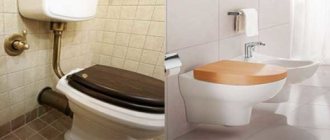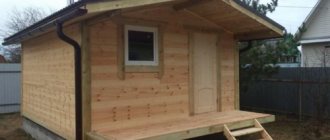The water in the pool begins to deteriorate over time, this is due to the rapid proliferation of bacteria and fungi. Mucus and green deposits appear on the walls, the water becomes cloudy, and unpleasant odors can be felt even from a distance.
It becomes impossible to swim in such a body of water, and contact with germs is especially dangerous for children - their fragile bodies are weak and susceptible to various dangerous diseases. Using a pool pump with a filter and disinfectant compounds solves the problem. The water will constantly circulate in a closed circuit; all that remains is to periodically change the filter elements.
Kinds
There are three types in total:
- With cartridges - replaceable filter elements purify the water; they will have to be changed periodically - approximately every month.
- Sand - the flow will pass through a container with quartz or glass sand. The sand needs to be washed from time to time - weekly is recommended. And once a year the system needs to be cleaned using chemicals.
- Combined - this is a device with a filter and a chlorine generator, which is a system that produces a disinfecting chlorine solution from ordinary salt (NaCl).
River sand and iodized salt cannot be used.
It is necessary to purchase special consumables for pool filter pumps. There are also diatomaceous earth pumps, which use plankton powder as a filter mixture. They are more expensive than others, but they purify water as efficiently as possible. One of the disadvantages of such a system is that the filter composition must be periodically replaced.
Classification by type of action:
- Centrifugal and vortex . Inexpensive models are distinguished by high noise levels but low performance. The pumps are good for installation in small pools. Able to work for many years without any complaints.
- Self-priming . Well suited for installation in water purification systems. Low cost and fairly low noise levels will make your stay as comfortable as possible. The performance is modest, so such pumps are most often used for small and medium-sized pools.
- Circulating . The most powerful filter pumps, in 24 hours such a system can pump the entire volume of water at least 4-5 times, and when installed in small pools this figure can exceed 6-7 times. Suitable for large artificial reservoirs and commercial pools.
Expert opinion
Kulikov Vladimir Sergeevich
The choice depends on the type, volume of the bowl and frequency of use.
water pump
The classic pump scheme, which has been used for several decades in many villages and towns without running water.
The simplicity of the design allows it to be used in disadvantaged areas without extra costs. An excellent option for a plot of land that has a well.
The following components will be needed:
- PVC pipe 5 cm in diameter with plug and elbows.
- Check valves 0.5 2 pieces.
- PPR pipe 2.4 cm in diameter.
- Rubber gaskets and several pairs of bolts with a 6-8 mm nut.
- Additional details.
Let's make a pump.
In order for the structure to work, it is necessary to ensure the reliability and tightness of the structure. The handle is connected to a piston, which creates pressure in the working chamber. Under the influence of increased pressure, water passes through two valves and reaches the outlet. If you do not ensure the reliability of the housing and the tightness of the gasket, your efforts will be in vain
Device and connection rules
The electrical device itself is a plastic flask with a motor inside and a body with a paper cartridge. On some models, the filter elements are located separately, the same applies to sand and combined systems. The chlorinator is connected separately. A skimmer is a device that removes the top layer of water in a pool.
Its functions:
- Prevents water from overflowing.
- Used to add a disinfectant composition.
- Helps remove large debris from the surface: fallen leaves, branches.
Water enters the skimmer, passes through the filter and is supplied back to the pool.
Pump connection principles:
- The water supply and intake must be connected at opposite ends of the pool bowl, otherwise the cleaning efficiency will be low.
- Be sure to install a large mesh on the skimmer so that debris cannot get into the system.
- It is recommended to additionally connect a water heater - then swimming will be comfortable. In warm water, disinfectant compounds will work better.
For small pools, you can use conventional submersible pumps, but in this case you will have to completely change the water periodically. These are the most affordable devices. This method is suitable for houses where there is a water supply.
Expert opinion
Kulikov Vladimir Sergeevich
Every day you should purify the water 3-4 times.
Is such equipment necessary?
Of course, those who have very small stationary or inflatable structures do not have to deal with the issue of water filtration. After use (bathing), it is simply used for household needs and watering cultivated plants on a personal plot. When necessary, the container is refilled - and no problems. However, this is only relevant for small tanks.
Despite this, even a small artificial reservoir can cause certain difficulties for its owners. After draining the liquid, the surface should be washed, only then fill the mini-pool again. Maintenance is a rather labor-intensive process, and in the summer you want to freshen up more than once a day. What can we say about children who are ready to splash in an artificial pond around the clock?
Without proper care, water quickly becomes polluted. Harmful microorganisms and bacteria multiply in it. After some time, a distinct unpleasant odor and green color appear. Swimming in such conditions is unsafe.
In addition to contaminants entering the aquatic environment due to human use, standing liquid becomes a haven for:
- dust particles;
- leaves and grass;
- bird waste products;
- pollen of plant origin.
The presence of these unwanted elements is eliminated using special nets and water vacuum cleaners. However, complete cleaning is not possible with these devices. Most of the substances entering the water dissolve or remain in it in the form of suspensions. That is why it is necessary to clean not only the surface and sediment, but also the liquid layer itself.
How to choose a filter pump for a pool
To select a device of the required power, you need to take into account the volume of the bowl.
It is believed that a complete water renewal cycle should take about 6 hours.
Then the performance of the filter pump should be:
Pool volume (in cubic meters) / 6 hours
Example: for a 30 cubic meter bowl, ideally you will need a pump with a load of 5 cubic meters. m per hour. But the recommended value is a little more - 7-8 cubic meters. m, since it is necessary to take into account the resistance that the filter will provide.
What to look for when choosing a pump:
- Power – the more actively the pool is used, the more powerful the electric motor should be. A weak engine simply cannot withstand heavy loads, will begin to overheat and eventually burn out quickly.
- Energy saving – pumps with this function are more expensive, but thanks to energy savings they pay for themselves quite quickly.
- Noisiness – extraneous loud sounds can be tiring during rest.
Before purchasing, you need to clarify information about the warranty period indicated by the manufacturer, as well as how accessible replacement cartridges are for this model. It is also important to find out about the availability of service centers for the brand you are interested in in the region.
Comparison table of characteristics
In order to compare the presented products, we suggest taking a look at their characteristics in the table below.
| Model | Productivity (cub.m/h) | Housing material | Pressure (bar) | Filter diameter (mm) | Price, rub) |
| Emaux SP650 | 15.3 | polyethylene | 2 | 650 | from 13000 to 16000 |
| Aquaviva S450 (D450) | 8,1 | high strength plastic | 2,5 | 450 | from 14719 to 17000 |
| Bestway 58486 | 9,8 | plastic | 1,59 | 385 | from 17888 to 23000 |
| Hayward Star Clear C500 | 33 | cast polymer | 3,4 | 203 | from 78034 to 90000 |
| MTH (skimfilter) IS6 | 5 | high strength plastic | 16 | 160 | from 48000 to 60000 |
| Hayward 33 cubic meters/hour | 33 | reinforced polyester | 3,5 | 660 | from 78034 to 90000 |
| Aquaviva V700(B) | 20,16 | fiberglass | 2,5 | 723 | from 23299 to 27800 |
Tips for use and repair
What kind of pool pump do you use?
Sand Cartridge
Like any equipment, electric pumps can fail over time. In some cases, you can solve problems yourself, given that the filter pump design is not very complicated. The worst option is a burnt out motor. Most often, it is more profitable to purchase a new device, since the cost of the engine is 70-80% of the total price.
What malfunctions often occur:
- The pump began to pump water poorly - if replacing the filter elements did not give anything, then it is recommended to check the hoses and pipelines. Large debris may have gotten inside; after removing it, the system will work normally again.
- The motor runs, but does not pump water - the pump blades may be damaged. To eliminate the problem, you will have to disassemble the engine block. In some cases, it is possible to replace broken parts with new ones if you can order them. Or make the impeller yourself using a 3D printer.
- The motor does not start, but has not burned out - the wires could have broken, the contacts have oxidized, or the fuse has blown. Using a tester and visual inspection, check the pump after disassembling it.
The frequency of replacing filter elements and washing sand should be specified in the instructions supplied with the pump.
Expert opinion
Kulikov Vladimir Sergeevich
Most modern pumps clean using a water return function. The device should be washed approximately 1-2 times a month.
What to look for when choosing
When choosing a filter, you must consider the following recommendations.
- Pool location . Depending on the outdoor or home pool, different types of filters are selected for it. For example, sand models are more suitable for outdoor pools, while diatomaceous earth and cartridge models are considered universal, so they are suitable for a pool with any location.
- Frequency of pool use. The less frequently the pond is used, the less powerful the filter should be.
- Fasteners . Cartridge filters are attached to the side of the pool, while other types are installed next to the water tank.
- Volume . The power of the device depends on the volume. This factor must be clarified with specialists at the time of purchase.
